Hermit Crab Molting or Dead: Understanding Hermit Crabs’ Molting Stage
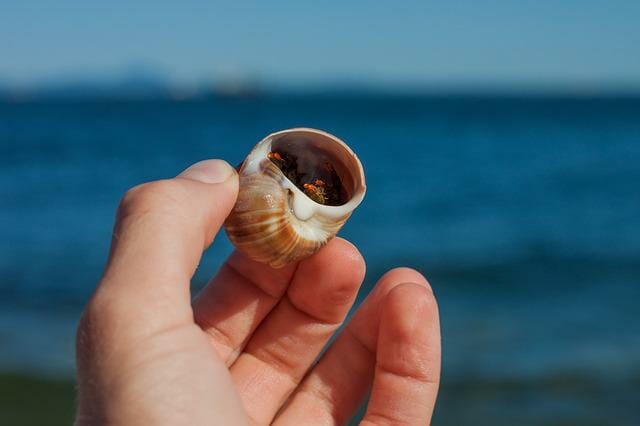
It is not easy to immediately tell whether a hermit crab is just molting or is already dead. If you are confused about whether your hermit crab is molting or dead, it is essential to take it to a qualified veterinarian for an autopsy and proper diagnosis. Alternatively, you can wait and see if the molting process resolves itself. If it doesn’t, you may need to take steps to help the crab resolve the molting process.
Table of Contents
Hermit Crab Molting Process
Molting is a natural process whereby hermit crabs shed their old hard exoskeleton and grow a new one. This can take a few weeks to a few months, and during this time, the hermit crab may be sluggish, hideaway, and display other signs of stress.
Once the new shell has fully formed, your hermit crab is ready to enjoy life outside its old shell. So keep an eye out for changes as the process unfolds – you’ll be able to tell when the hermit crab is molting as its shell will start to look slightly different. Be patient, as the process can sometimes take up to several weeks, but it’s well worth the wait!
Stages of Molting
Molting is a process that many animals go through to adjust their outer shell to the new environment. In the case of hermit crabs, this process typically happens twice a year as they need to shed their old shell and replace it with new ones.
During this time-consuming process, hermit crabs withdraw their old shell and replace them with hard ones. This takes about two months, and during this time, the crab can’t move around too much as its new body strengthens while shedding its old skin. Once all the shells are replaced, the crab is free to start moving around again!
What a Molting Hermit Crab Looks Like
Most hermit crabs look pretty different during their molting process, but some may appear dead. If this happens, take it to a veterinarian for a proper diagnosis and treatment.
It’s essential to monitor your crab closely and keep an eye out for any changes in behavior or appearance. Remember – molting is a process that is necessary for the hermit crab, so don’t let one of your beloved crabs die during this time!
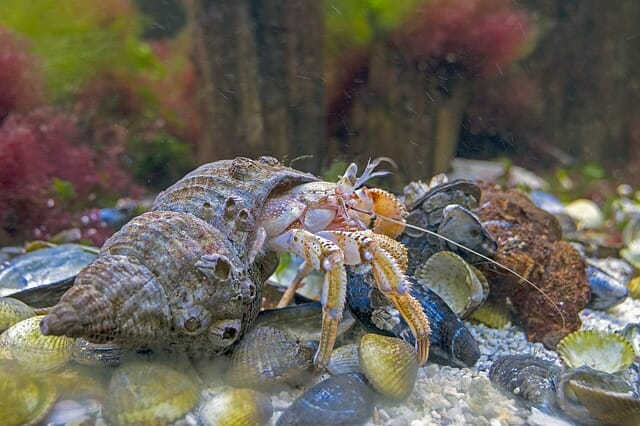
Looks Dead
It can look like the crab is dead because it doesn’t have a new outer shell to protect it. So molting, or the process of shedding an old shell and replacing it with a new one happens in crabs periodically.
Once molting is complete, the crab will look back to normal. Molting usually takes 4-8 weeks but can sometimes take up to 12 weeks, depending on the crab species.
Out of Shell
The old shell is usually left behind on the seafloor or elsewhere; once the molting process is complete, the crab will look quite different – sometimes even unrecognizable!
New Coloring
After molting, the crab will have a new color and look different from its old self – be on the lookout for signs such as increased appetite or space on its carapace (where its previous shell used to be).
Signs Hermit Crabs Will Soon Molt
Hermit crab molting is an exciting process for all involved, but it doesn’t come without its challenges. Once the process starts, there’s no stopping it – so relax and let them do what comes naturally.
If you notice your hermit crab is acting sluggish or has stopped eating, it’s time to take action. Keep an eye out for any changes in behavior, and be prepared for the molting process to take a few weeks. When it finally happens, the crabs will remove their exoskeleton, which can make them look a little different – but they’ll eventually revert to their old selves. So keep an eye out for them and enjoy the process as it unfolds!
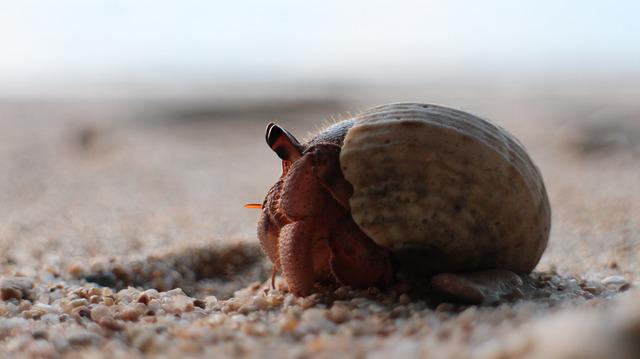
Drinking More
It is time to increase your hermit crab’s water intake in preparation for molting. Avoid giving them salt, as it can spoil their food and delay molting. Make sure their tank is clean and free of debris so they can easily access the water, and keep an eye on them if they start to look sick or lethargic – take them to a veterinarian as soon as possible!
Eating Stops
If you see your hermit crab molting, ensure they have access to a good diet. If the crab is not eating, it is likely that it is in the process of molting and may die. So be patient and wait until you see signs that the hermit crab has finished molting before feeding them again.
Unusual Activity
Various signs may indicate that your hermit crab is molting – for instance, it might become more active or eat more than usual.
If you’re ever worried about your hermit crab, the first thing to do is check its shell. Crabs molting will typically exude a white or clear secretion from the pores in their shells.
If molting is not proceeding normally, it can lead to the crab’s death as they cannot properly fight off infections and other complications. To ensure a smooth process and help keep your pet safe during this process, take it to a veterinarian as soon as possible!
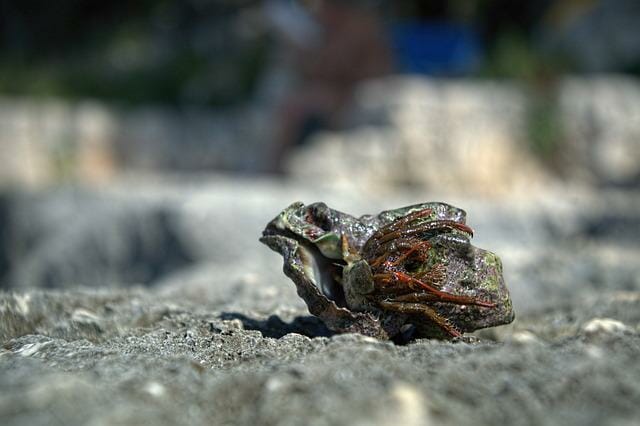
Change in Appearance
As crab molting season approaches, you will likely notice the crab’s appearance changing. This process can happen anytime but is often associated with the breeding activity.
During this time, your hermit crab will lose its exoskeleton and become a different color – usually lighter or darker than before. This may also result in behavioral changes, such as spending more time in the water or on land. Keep an eye out for these signs so that you know when they are ready to resume their routine!
Missing Limbs Begin to Regenerate
As the time for hermit crab molt draws near, you might notice that the crab is losing its limbs. This process usually happens within a few weeks and can indicate a hermit crab’s readiness to mate or impending death.
Losing limbs during molt is something that crabs will go through periodically throughout their life span – it’s simply another way they ensure they keep evolving and getting stronger. Don’t worry, though – as long as you monitor your crab closely, you’ll be able to see the limbs begin regenerating soon enough!
Indicators That a Hermit Crab Has a Problem With Molting or Is Dead
It can be challenging to tell the difference between a hermit crab’s molting and death, so it’s important to know what to look for. For example, if you see any of the following signs that your hermit crab is molting: increased activity, an increase in size or color; unusual movements; foul-smelling water; or lack of appetite, it probably needs help!
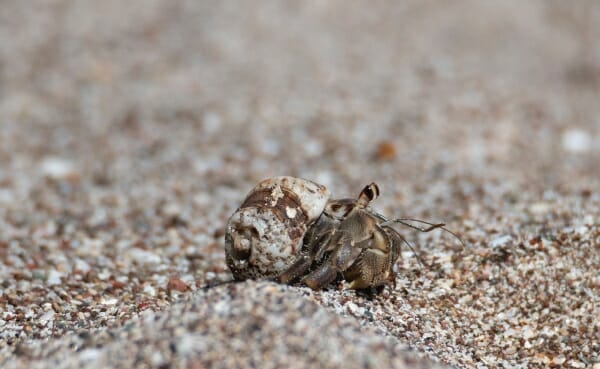
Spotting Pieces of Exoskeleton
It is essential to note where all the old shell fragments are located around the crab’s body. Sometimes you can spot them immediately; other times, they may need closer inspection with a magnifying glass. Regardless, don’t hesitate to get help if your crab seems injured!
Strange Odor
If you’re a hermit crab owner and something seems fishy, it might be time to get your pet checked out by the veterinarian.
You can do a few things to help your crab during this time of recovery:
- Provide fresh water and feed it live food (such as brine shrimp) to help with its digestion.
- Watch for any changes in behavior or molting process, and contact the vet if anything abnormal occurs.
- Remember that hermit crabs need plenty of love during these stressful times!
Signs of Decomposition
If you’ve noticed any of the following signs that your crab is in the process of molting, it’s time to take her to a vet or animal shelter for further observation:
- They have lost interest in food or water.
- Shells are scattered around.
- The crustacean looks swollen and bloated.
- The crab doesn’t seem to be moving as much as usual.
- The new shell isn’t hardening yet (it might still look soft).
Other Signs
If you notice any of the following signs that your hermit crab may be dead, removing the crab from the tank and replacing it with a new one is best.
1. The crab’s body appears shriveled up – this means that the crab is most likely dead and should be removed from the tank.
2. The hermit crab seems lethargic or uninterested in food – this could mean that the hermit crab is molting or has contracted an illness, both of which are severe conditions and need to be treated soon as possible.
3. You see the hermit crab’s antennae pointing down – molting usually happens before death, suggesting that your hermit is about to go through a process called exoskeleton shedding.
Them and sometimes leads to their death. Make sure you know what to look out for so that you don’t miss any vital signs to help your pet stay healthy!
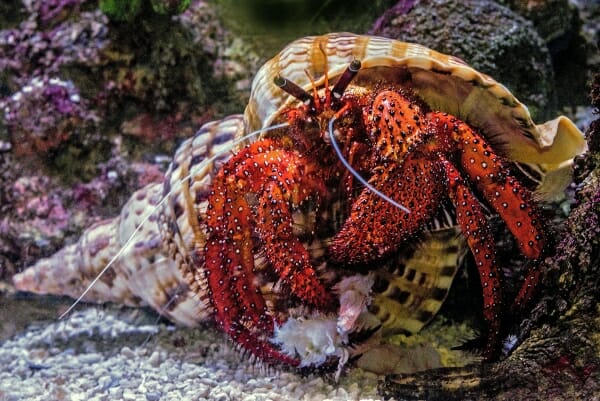
What to Do When Hermit Crabs Molt
Ensure to provide enough water, food, and shelter for your pet while it’s molting. If you see anything wrong, don’t hesitate to contact your veterinarian. As long as you’re providing the necessary care, your pet will be just fine!
Place It in a Safe Place
Once the old shell has been removed, it’s time for the hermit crab to prepare for its successive molt by eating some of its eggs. Make sure you have a safe place prepared where it can do this – maybe the kitchen sink or even the bathtub!
After molting is complete, replace the old shell with a new one so that your crab stays healthy and secure during its extended stay inside.
Check That Your Pet Has Enough Substrate
It’s essential to keep an eye on your hermit crab during the molting process – checking that they have enough substrate for the process. The substrate can be sand, calcium sand, or coral rubble.
Remember: Handle your pet gently during the molting process; do not force them if they are not ready.
Change the Water Every Day
To ensure your hermit crab is getting fresh water, it must change it daily!
Prepare Extra Shells
Be sure to have plenty of extra shells available, as your hermit crab will lose them during molting.
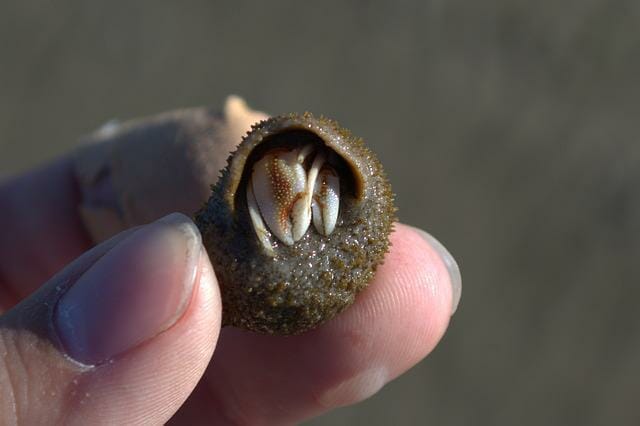
Feed Your Pet Appropriately
Feeding your hermit crab properly during the molting process can help it to reach its full potential as a crab. Ensure that your pet has the right food and water before molting – this will help ensure that all the nutrients it needs are available. Once molting is complete, don’t force feed it because doing so might stop him from eating correctly later in life.